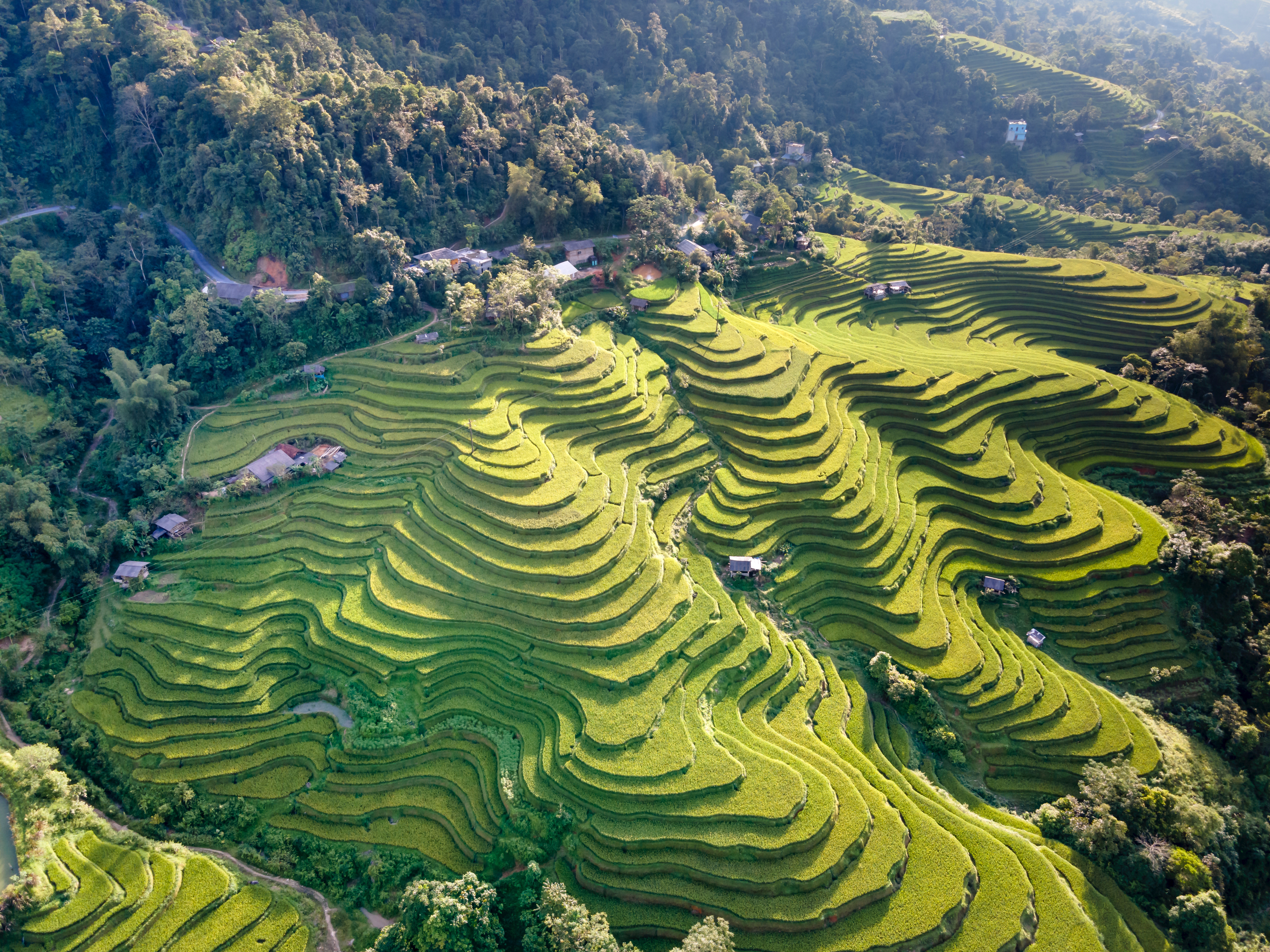There is mitigation risks of hybrid rice used in terrace agriculture

An Unesco World heritage Site and the national emblem of China is in the Yunnan province named the Honghe Hani Rice Terraces but some of these terraces are falling down. Joy D'Angelo , Santosh S. Palmate, and Luc Descroix has researched why the Honghe Hani Rice Terraces is falling apart and what can be done about it.
About the Honghe Hani Rice Terraces
According to Unesco, the Honghe Hani Rice Terraces is a Unesco World Heritage site and is rice terraces in Yunnan, China. These terraces are also known to be cultural landscapes. Shockingly enough these terraces are an extension from the “uKhahlamba Drakensberg Park which is now known as the mixed cultural and natural Maloti Drakensberg Transboundary World Heritage Site (Lesotho and South Africa).” The cultural landscape covers 16,603-hectares in the Southern parts of Yunnan. The spectacular pattern of terraces cascade down from the Ailao Mountains and to the banks of the Hong river. There is a complex system that is developed by the Hani people in which they can bring water from the forested mountaintops to the terraces. Moreover, there is an integrated farming system that involves many types of animals, which include: fish, ducks, buffalos, eel and cattle.
The research by Joy D'Angelo , Santosh S. Palmate, and Luc Descroix shows the downfalls
The research in the article by Science Direct, Mitigating risks of hybrid rice use in terrace agriculture, shows that water and seed management technologies have failed as the shortcomings were not addressed accordingly. This is especially for the people who depend on them and the effects of the rice terraces. To better articulate this issue data was collected by interviewing the local people, and examining the scientific literature that has been written about this topic. To make the data collection more meaningful the researchers went to China and got a local person who talks the language to communicate with the Hani people or rather the first people who had succeeded in carving the rice terraces. Further, those who enabled the mountain irrigation systems to work as this was a traditional practice of rural water management. The research shows the very recent changes in the system, which is putting the terraces in danger.
The methods of the study that was out taken
In order to gain data collection that Hani people were involved in answering questions regarding the drastic changes about the rice terraces. The environment, weather patterns and topography was studied in detail. Further, there was a partnership with the Yunnan Nationalities University where ecological academics were interviewed.
The solutions going forward in revitalising the rice terraces
The solution put forward is going back to traditional methods and the old system but this would not be beneficial. Alternatively, the hybrid rice system seemed to have flourished and had a positive impact on the rice terraces.
The impact assessment results on humans on the rice terraces
An impact assessment was taken out on humans and showed that the inbred and hybrid system showed that women were poorly affected. Men were both positively and negatively affected. The impact on children, girls and boys were worse and regarding hunger, elderly, animals and economic possibilities all showed worse results. Ecology was for the better and human health was for the better and the worst. The results of the hybrid system in the above categories were mostly for the better. Further, research shows that by having resilience and nourishing the soil in the terraces the rice terraces can flourish again. Another mentioned that the diseases and pest disasters must be known as such so that prevention of these diseases can be prevented. The intercropping of old and new of rice breeds at the same strategic location can be a method in building resilience in the rice terraces.
The final message that the researches put out for the rice terraces
There are several innovative agricultural management practices that have been put forward that can help build resilience in the rice terraces at strategic locations. The improvements such as intensifying agroforestry, intercropping, improving biodiversity, and affirming local ecological knowledge could have long-term positive effects for slope agriculture and hybrid rice terracing. The researchers have put out a call for the rice terraces' success and progress to be monitored.
Personal thoughts on the degrading rice terraces in Yunnan, China
The rice terraces have degraded but were also part of the Drakensberg slopes in South Africa, could the climate in the North be affecting the terraces as the Drakensberg slopes seems to not be having any issues. Maybe the researchers should teach the traditional Hani people about their solutions on slope agriculture and intercropping, in which these rice terraces would be maintained as being a UNESCO site. Also the Hani people depend on these terraces for income and food but are also attached to a lot of traditional practices. This culture and years of hard work in creating these rice terraces can not be lost and the monitoring of these rice terraces is crucial.
Story Source:
Materials provided by Geography and Sustainability. The original text of this story is licensed under a Creative Commons License. Note: Content may be edited for style and length.
Journal Reference:
Author links open overlay panelJoy D'Angelo a et al. (2022) Mitigating risks of hybrid rice use in Terrace Agriculture, Geography and Sustainability. Elsevier. Available at: https://www.sciencedirect.com/science/article/pii/S2666683922000736 (Accessed: March 5, 2023).
Farming in rice terraces on mountain slopes · Free Stock Photo - PEXELS (no date). Available at: https://www.pexels.com/photo/farming-in-rice-terraces-on-mountain-slopes-6872743/ (Accessed: March 5, 2023).
0 Comments